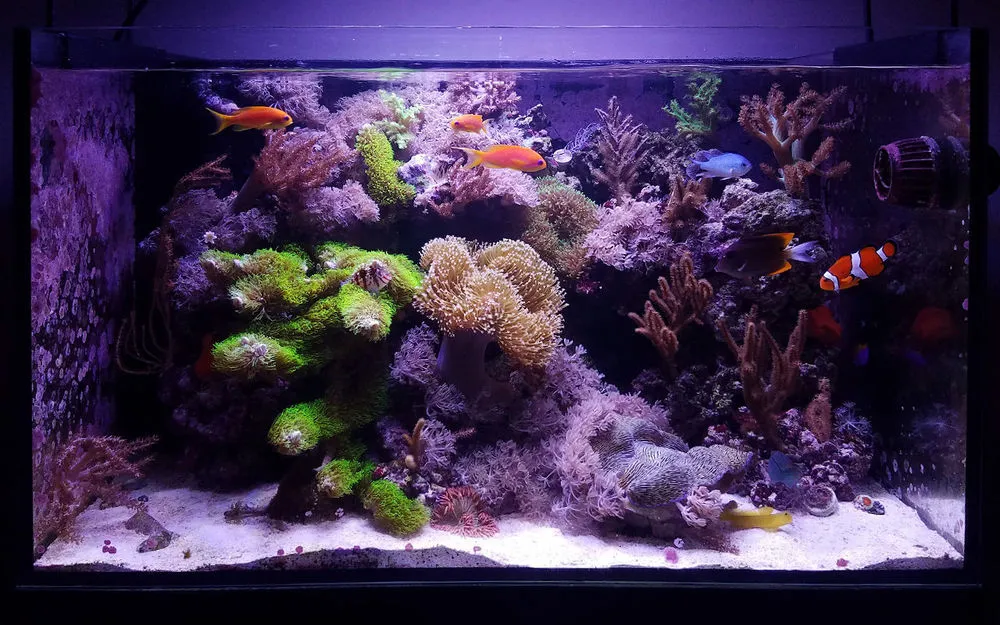Stunning 42-Gallon Reef Tank – dpoltsdsu's TOTM | NanoReef

Tank Specifications
Volume: 42 Gallons / 159 Liters
Dimensions (L × W × H):
30.0" ×
18.0" ×
18.0"
76.2cm ×
45.7cm ×
45.7cm
Equipment List
- Salt: B-Ionic
Frequently Asked Questions
How often should I feed the fish in a reef tank?
In a reef tank, it's recommended to feed your fish 3 to 4 times a day, particularly if you have fish like Lyretail Anthias that require frequent feeding.
What is the best way to perform a water change in my reef tank?
For a successful water change, you should change about 20-40% of the water monthly, siphoning the sand bed and blowing detritus off the rocks with a turkey baster to prevent buildup.
How do I ensure my coral stays healthy?
Spot feed your corals with appropriate food (like Reef Roids) a couple of times a week, and visually inspect for any signs of distress or disease.
How can I control algae growth in my reef tank?
To control algae growth, ensure you have a clean up crew with snails and crabs, perform regular maintenance like glass wiping, and keep nutrient levels such as nitrates and phosphates low.
How often should I test the water parameters?
Testing your water parameters should be done weekly, particularly for Calcium and Alkalinity, to ensure they are within the optimal ranges for your corals and clams.
What Calcium and Alkalinity levels should I maintain?
A Calcium level of around 400 ppm and Alkalinity around 8 dKH is ideal for maintaining a healthy reef environment, especially for clams.
How do I manage high bioload in my reef tank?
To manage high bioload, utilize both a protein skimmer and a Cheato refugium for filtration. Additionally, performing regular water changes can help maintain water quality.
What equipment is essential for maintaining a nano reef tank?
Essential equipment for a nano reef tank includes a good protein skimmer, a suitable LED lighting fixture, a heater, circulation pumps, and a refugium for nutrient export.
How do I change out the filter media effectively?
Change out your carbon media monthly to maintain water clarity and reduce toxins produced by soft corals. Be sure to rinse the new carbon before adding it to your filter.
What types of fish are suitable for a 42 gallon nano reef tank?
In a 42 gallon nano reef, you can include small to medium-sized fish like Clownfish, Anthias, Gobies, and Wrasses. Avoid larger species that need more swimming space.
How can I reduce pests and disease in my reef tank?
Introduce fish species that help control pests, like Melanurus Wrasse for nudibranchs, and maintain a consistent feeding and water quality routine to reduce stress and disease.
How should I position soft corals in my tank?
Position soft corals in a way that mimics their natural growth patterns. Ensure they have enough space to grow and receive adequate light and water flow without overcrowding.
What feeding routine works best for corals?
A good coral feeding routine includes spot feeding with specialized foods such as Reef Roids a few times a week, along with normal feeding of the fish which can benefit corals indirectly as well.